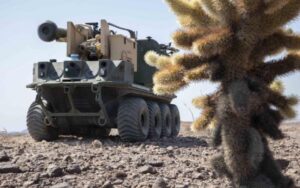
The Army is currently running its second of four exercises to test a range of capabilities required to enable joint interoperability and advanced data sharing at its upcoming Project Convergence 2021 (PC ‘21) demonstration, which will feature bolstered participation from the other services. The lab-based COMMEX demonstration underway at Aberdeen Proving Ground in Maryland is utilizing the new Joint Systems Integration Lab (JSIL) to test 50 technologies that could serve as critical nodes for creating a new “sensor-to-shooter” network bringing…

 By
By 











